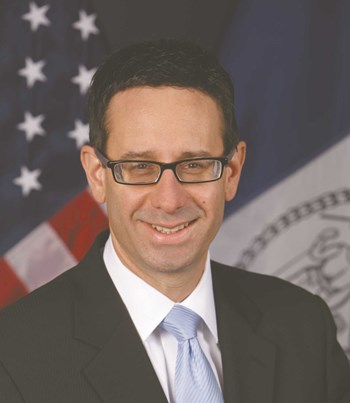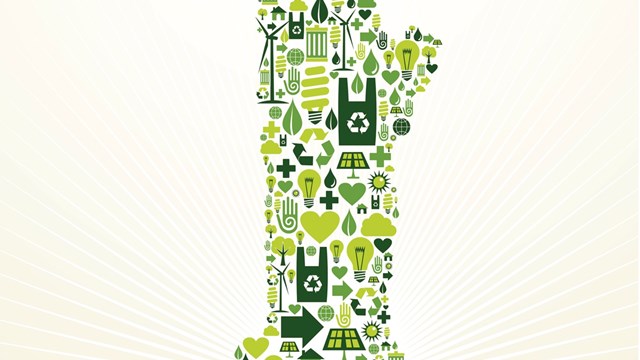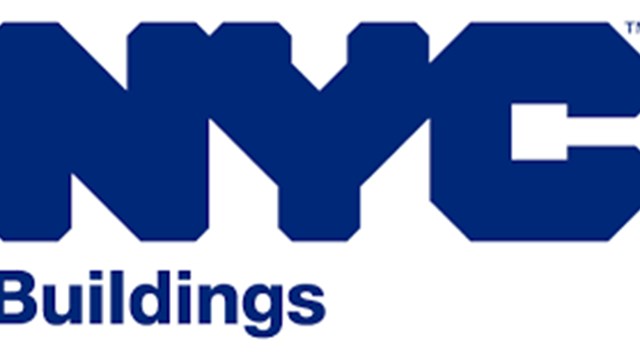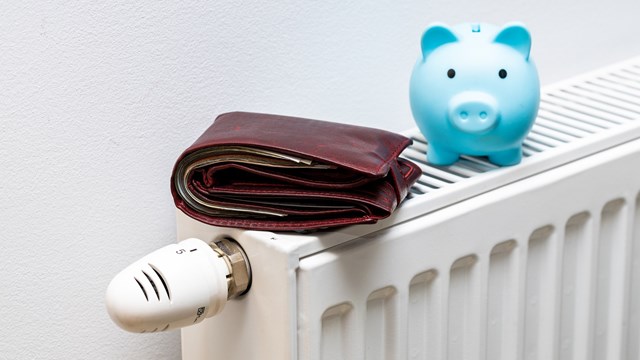
New York City’s Department of Buildings wields great influence over how structures in the city are built and maintained, presiding over everything from building inspections to permits, building codes and materials. While that area of governance might seem rather pedestrian, a resident doesn’t need to look any further than the city’s sidewalks to get some measure of the impact that DOB is having on the overall aesthetic—and safety—of New York City.
Humble Start
Laws to govern buildings had their start when New York City was still the Dutch colony of New Amsterdam. In 1625, the Dutch West India Company established rules for the types and locations of houses that could be built by the early colonists, the DOB explains on its website. This pioneering attempt at meeting public safety and sanitation needs evolved into one of the most comprehensive building and zoning codes in the country. By 1674, extensive laws governing construction, fire prevention and sanitation were in place. In 1860, after a tenement fire took 20 lives, New York City's building laws were extensively revised and strengthened. At that time, the position of "Superintendent of Buildings" was created within the Fire Department to enforce the new structural safety laws. An independent "Buildings Department" in Manhattan was later founded in 1892. Each borough president's office had an autonomous Superintendent of Buildings until 1936, when a citywide Department of Buildings was created. Thus the modern DOB was born.
Since that time, the DOB has gone through many transformations resulting from new laws enacted to give it more muscle and to protect the populace. The first building code in 1898 had a measurable effect on the DOB’s ability to enforce standards. Later, building code revisions mandated in 1938, 1968 and 2005 strengthened that departmental authority. The department’s mission is to ensure the safe and lawful use of buildings and properties by enforcing the building code and zoning requirements.
According to DOB spokesperson Ryan FitzGibbon, “We oversee the safe and lawful use of 75,000-plus buildings and construction sites in New York City’s five boroughs.”
How They Help
As the DOB has evolved and developed, its administrators have worked hard to make the department more transparent in its operations. The idea is to be a more responsive government entity that is helpful to its constituents, DOB leaders say. Such a businesslike approach is expected of the DOB because of its location and size. The organization now has 1,100 employees, including 350 inspectors.
“We play an integral role in residents’ lives,” says Buildings Commissioner Robert LiMandri, who was appointed in October 2008. “We are working to elevate people’s quality of life. We provide information to the public on all of the players in the housing process, to ensure that all of our people are accountable.”
Engineers and architects licensed to work in New York State need to be accountable as well, LiMandri notes. To that end, the DOB creates a staggering amount of paperwork annually charting the work of these professionals and others. In October of 2009, the department scanned nearly 900,000 documents and archived them online, enabling the public to see what is happening with various properties and projects throughout the city. Documents including complaints, violations, records of who pulled a building permit, zoning documents including preliminary building plans, and other records are all available and searchable through the DOB’s website.
“People expect government employees to do their job and do it appropriately,” LiMandri says. “The best way to hold people accountable is to make it so everyone can see the documents. That way if people have a concern with the proposed design of a building, they can see what’s going on with the building.”
The department recently has taken other approaches to accountability regarding safety in New York City buildings. After a recent fatal balcony collapse DOB inspectors conducted an enforcement sweep of buildings with similar balconies and immediately vacated balconies in 17 buildings. Those balconies and others had been checked for spalling concrete and structurally unsound railings, and the 17 vacated were closed because they were deemed unsafe until suitable repairs were made.
The DOB also has worked to improve oversight of its employees by tracking their moves to see that they are performing their regular duties. Through global positioning systems carried by all of their employees, on-the-job DOB workers have the boss watching them even when they are working outside the office.
Greening Buildings
DOB officials see their organization as not only a leader in the safe use, construction and repair of buildings, but also as a leader in mandating energy efficiency in those buildings.
While it is common knowledge that buildings in New York City generate nearly 80 percent of the city’s carbon emissions, in July, the DOB did something about this troubling statistic by launching the New York City Energy Conservation Code (NYCECC). The NYCECC is the first energy code developed specifically for New York City. The code amends the New York State Energy Conservation Construction Code, which set efficiency standards for construction in New York City. The new code also is much stricter than the state code, requiring many more building projects to meet energy efficiency requirements.
The NYCECC was introduced as legislation by Mayor Michael R. Bloomberg and New York City Council Speaker Christine C. Quinn in April 2009 as part of the Greener, Greater Buildings Plan, which is intended to make New York’s buildings more energy efficient. Greater, Greener Buildings is a large part of PlaNYC, which is the city’s long-term sustainability vision that is intended to reduce carbon emissions by 30 percent by the year 2030.
“Our new code requires more buildings to be energy efficient when making repairs, which will help reduce energy consumption, energy costs and the city’s carbon footprint,” says LiMandri. “These new standards will improve the quality of life for generations to come.”
Because of the new code, applications for new construction or renovation work now must comply with the NYCECC, including its energy efficiency standards. Those standards include requirements that a building’s roof, walls and foundation must have proper insulation and sealing to prevent energy loss. A building’s heating, ventilation, air conditioning (HVAC) and service hot water equipment now must have proper insulation and sealing at ducts and connecting pipes, as well as controls that minimize energy use. The new code also requires a building’s lighting and power systems to be designed with lighting power density standards, and to have controls that minimize energy use.
The department is doing even more in this area. As part of the New York City Cool Roofs program, DOB is working to coat roof space on city buildings with a greener sealant. The program aims to coat 100 million square feet of space in 2010, says FitzGibbon.
Bringing in the Art
While the DOB’s prime directives are building safety and efficiency, the department’s more recent initiatives are also helping to reimagine how the city could look if more creative minds are given a say in that appearance. Through its urbanSHED and urbanCanvas design competitions, DOB has partnered with nonprofit organizations, other government agencies, the design and the arts community to make the transitional look of city construction sites less purely utilitarian and more beautiful.
Partnering with the American Institute of Architects New York Chapter, DOB announced the urbanSHED International Design Competition in August of last year. Other competition sponsors included Alliance for Downtown New York, ABNY foundation, Illuminating Engineering Society New York City and the New York Building Congress with support from the NYC Department of Transportation, the NYC Department of City Planning and the Structural Engineers Association of New York.
The urbanSHED and urbanCanvas competitions aim to beautify New York City’s ubiquitous sidewalk sheds—the structures erected to protect people walking by a building or construction site that is underway—and construction sites themselves with a recently chosen updated design created by the contest winner. There are about 6,000 sidewalk sheds in use in New York City right now, put up around the city’s buildings and construction sites. These structures span more than 1,000,000 linear feet, according to Department of Buildings statistics. The basic design of sidewalk sheds hasn’t been altered since the 1950s, though the city has changed and its sidewalks are much busier. A prototype of the winning shed design will be built in Lower Manhattan next year.
“Sidewalk sheds are typically viewed as inevitable eyesores,” says DOT commissioner Janette Sadik-Khan, “but this competition will bring fresh perspectives and aim to make our works-in-progress as attractive as the finished product.”
The competitions are one of the ways DOB is addressing quality of life issues in the city, says LiMandri. In January, Mayor Bloomberg and LiMandri jointly announced the winner of the urbanSHED competition. The winning design, “Urban Umbrella,” was developed by a team consisting of Young-Hwan Choi, who created the initial design; and Sarrah Khan, a professional engineer, and Andres Cortes, a registered architect, both from the New York-based design firm Agencie Group. The winning design was selected from 164 entries submitted by architects, engineers, designers and students from 28 countries around the world and will be built on a construction site in Lower Manhattan later this year.
Finalists’ designs in the urbanCanvas competition will be featured on www.nyc.gov/urbancanvas for a public vote. Up to four winning designs will each be awarded $7,500, courtesy of the Rockefeller Foundation grant to the Mayor’s Fund.
Thinking Globally
As part of its thrust of being a responsive, modern, more streamlined organization, in 2008 DOB adopted the new International Building Code (IBC) for the city. The new code makes it easier for architects and engineers from around the country and across the globe to work on buildings in New York City.
“Part of it is setting new standards, like they are in the rest of the country. And part of it is being able to enforce them,” says LiMandri. “In this 24-hour news cycle age, government is expected to change with the times as well. We can be a real accelerator of development.”
Freelance writer Jonathan Barnes is a frequent contributor to The Cooperator and other publications.









Leave a Comment